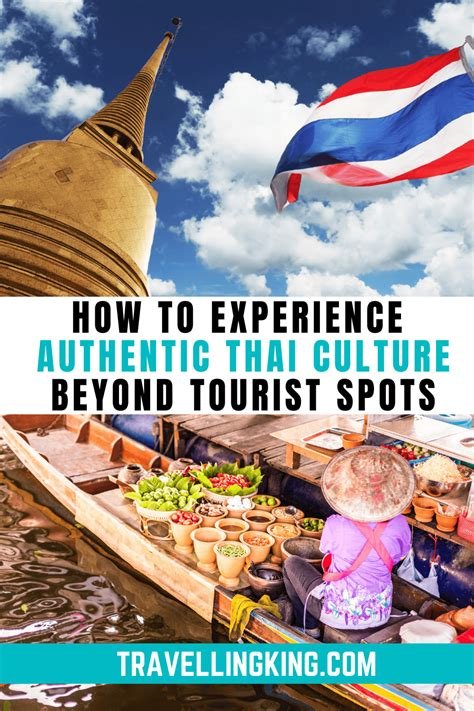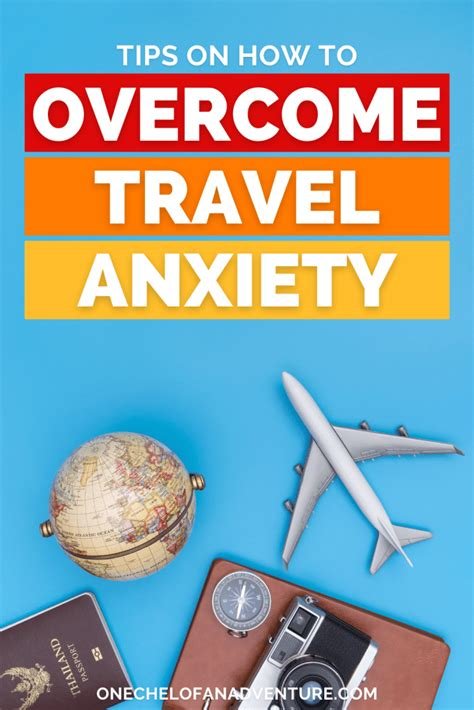In the blog post How to Experience Authentic City Life Beyond Tourist Spots, readers are guided on a journey to discover the true essence of cities by venturing beyond typical attractions. It emphasizes the beauty of local areas and discusses how exploring them can enhance the overall travel experience. The article provides practical tips on finding hidden gems, navigating local transportation like a resident, and indulging in culinary experiences that reflect the region’s culture. Engaging with locals is encouraged for meaningful conversations, while cultural events and festivals are highlighted as opportunities to immerse oneself in authentic local life. Additionally, safety tips for these explorations are shared. By following these insights, travelers can have a genuine experience that truly represents the city, offering actionable steps to start engaging with local life today.
Uncover The Beauty Of City Life Beyond Tourist Spots
To truly understand a city, it’s essential to step outside the usual r tourist hotspots and dive into the local culture. Exploring beyond typical attractions often leads to more enriching experiences and a deeper connection with the city’s rhythm. When you how to embrace a city’s authentic environment, you gain insights that tourists often miss. Each neighborhood has its unique story, waiting to unfold before your eyes, offering a glimpse into the daily lives of its residents and their vibrant traditions.
No matter where you find yourself, there are countless ways to experience city life like a local. From dining in quaint, family-owned restaurants to wandering through bustling markets, every moment holds a treasure. One of the best methods to find these hidden gems is by talking to locals, who can share their favorites and often avoid the tourist traps. This approach also invites you to engage with the city beyond mere observation, fostering genuine interaction and understanding.
Explore Unforgettable Experiences: Local Food, Hidden Gem Cafes, Vibrant Markets
- Visit a local farmers’ market for fresh produce and homemade delicacies.
- Discover hidden cafes tucked away in residential neighborhoods.
- Join a food tour that showcases authentic local cuisines.
- Take part in community cooking classes or workshops.
- Explore street food vendors for a true taste of the city.
- Watch for local pop-up events featuring artisan creators.
- Search for local bakeries that have been around for generations.
When wandering the streets, let curiosity be your guide. Rather than following a mapped itinerary, allow the city’s energy to influence your journey. You may stumble upon vibrant street festivals, captivating murals, or quaint shops that showcase the talents of local artisans. These unexpected encounters not only enhance your travel experience but also contribute to lasting memories that define your adventure in the city. Embracing spontaneity can lead to discovering your favorite spot that no guidebook could ever point out.
Why Exploring Local Areas Enhances Your Travel Experience
When you embark on a journey to a new city, immersing yourself in the local areas can profoundly enrich your adventure. Instead of solely visiting popular tourist traps, consider the value of exploring neighborhoods where everyday life unfolds. This approach often leads to discovering the heart and soul of the destination, providing fulfilling experiences that you may not find in travel brochures.
Engaging with local culture allows travelers to witness authentic traditions, lifestyles, and food. Moreover, by venturing beyond the usual sights, you can enjoy a more genuine connection with the city. How to enhance your experience can be a matter of simply choosing to stroll through local parks, dine at neighborhood eateries, or visit markets filled with fresh produce and crafts. Each of these activities exposes you to the flavors and rhythms of everyday life.
Benefits Include: Authentic Encounters, Cultural Immersion, Unique Souvenirs
- Discover local cuisine that captures the essence of the city.
- Engage in conversations with residents that provide insider tips.
- Experience cultural traditions through festivals and events.
- Shop for handmade goods, supporting local artisans.
- Uncover hidden gems like quaint cafes and stunning viewpoints.
- Build meaningful connections with the community.
In addition to the enriching experiences, traversing local areas can also generate memorable stories to share long after your trip. Each interaction with locals presents an opportunity to learn and appreciate their way of life, creating bonds that can last a lifetime. Ultimately, taking the time to explore beyond the tourist spots gives a more rounded perspective of the city, making your travel experience truly unforgettable. Embrace the adventure, and you may find that the paths less traveled lead to the most rewarding experiences.
How To Find Hidden Gems In A New City
Exploring a new city offers countless opportunities to uncover authentic experiences that go beyond typical tourist attractions. If you want to know how to navigate this journey successfully, it begins with a mindset shift. Instead of aiming to tick off a checklist of famous sights, focus on engaging with the local culture and discovering what makes the city unique. This approach not only enhances your travel experience but also helps you forge genuine connections with the people you meet along the way.
One effective strategy in your quest for hidden gems is to prioritize research and local insights. Joining online forums or social media groups can provide you with valuable tips from residents and frequent visitors. Additionally, local blogs and travel websites often feature lesser-known spots that are ripe for the exploring. As you dive deeper into your research, keep an eye out for events, markets, and neighborhoods that are off-the-beaten-path. These are the places where you’re likely to uncover stories and experiences that tour guides rarely mention.
As the saying goes, “Not all who wander are lost.” Embrace the unknown!
After conducting your online research, it’s essential to take a hands-on approach to discovering the city. This includes immersing yourself in activities that foster connections with locals. Walking through neighborhoods, visiting local cafés, and participating in community events can provide insights that you won’t find in any travel guide. To streamline your journey into authentic city life, consider the following list of essential steps:
- Research local interests: Identify your passions and interests that align with the city’s offerings.
- Connect with locals: Seek platforms to engage with residents through social media or local meetups.
- Explore beyond main attractions: Venture into lesser-known districts and discover hidden parks, shops, and eateries.
- Converse with community members: Directly ask locals for their favorite spots and experiences.
- Attend local events: Find and participate in various cultural events or festivals that showcase local life.
- Document your experiences: Keep a diary or blog to record your journey and reflections.
- Reflect on your findings: Take time to appreciate the authenticity of your experiences.
Overall, understanding how to find hidden gems in a new city requires both preparation and spontaneity. By adapting your mindset to seek authentic experiences, engaging with locals, and maintaining an open heart, you will not only enrich your travel experience but also return home with unique stories that reflect the vibrancy of the places you visited. Whether you’re sipping coffee with a local artist or wandering through a secret garden, these moments often become the highlights of your journey.
Local Transportation: Navigating The City Like A Resident
When looking to experience authentic city life, understanding local transportation is essential. This knowledge not only enhances your travel experience but also allows you to maneuver through the bustling streets like a true resident. Familiarizing yourself with the various modes of transport enables you to explore areas often overlooked by tourists, making your journey richer and more immersive.
In many cities, tourists tend to rely on taxis or guided tours, which can create a disconnect from the local vibe. Instead, embracing alternative methods helps you interact more with your surroundings and gain a genuine feel of daily life. For those wondering how to travel efficiently while soaking up local culture, consider the following modes of transportation.
- Bicycles
- Public Transit
- Walking
- Rideshares
- Car Rentals
- Motorbike Rentals
- Taxi Services
Each of these options offers a unique viewpoint of the city. Bicycles allow for a leisurely pace while exploring significant landmarks and hidden corners. On the other hand, public transit connects you to neighborhoods that might be far from the central tourist spots. Walking gives you the freedom to navigate at your own pace, allowing for spontaneous discoveries along the way. Meanwhile, rideshare services can provide elderly locals or individuals traveling in groups with an easy way to traverse longer distances without the hassle of public transport.
“The best way to understand a city is to see it through the eyes of its residents.”
Remember, how to navigate these options effectively contributes to your overall enrichment. Each method offers distinct advantages, enabling you to blend into the city’s rhythm. The key is to maintain an open mind and a sense of adventure.
Culinary Experiences That Offer A Taste Of Local Culture
When seeking to understand a city’s true essence, one cannot overlook the significance of its culinary scene. Food is more than just sustenance; it reflects cultural traditions, history, and the communal spirit of local communities. How to dive into authentic culinary experiences involves exploring beyond the standard tourist traps and delving into local flavors that tell a story. Embracing these experiences can lead to memorable discoveries that enrich your journey.
Visiting local eateries often provides an engaging glimpse of daily life in a city. Family-owned restaurants and street vendors serve meals crafted from generations of recipes, each bite representing a piece of history. These culinary hotspots frequently run on word-of-mouth recommendations rather than flashy advertising, giving a more authentic feel to the dining experience. To guide your quest for local flavors, consider the following list of must-visit culinary spots:
- Traditional street food stalls bustling with locals at lunch
- Charming family-owned restaurants that have stood the test of time
- Local markets brimming with fresh produce and artisanal products
- Cafés that double as cultural hubs for art and music
- Food festivals celebrating the region’s culinary heritage
- Vibrant food trucks offering innovative takes on classic dishes
- Neighborhood bistros favored by the locals for casual dining
Experiencing a city’s local culture through its food is about more than just tasting; it also presents opportunities for interactions with locals. Engaging in conversations with vendors or fellow diners can unfold narratives about the dishes’ origins and their significance. This relational aspect makes enjoying local cuisines a valuable addition to your travel itinerary, enabling genuine connections that you won’t find in traditional tourist experiences.
“Food is our common ground, a universal experience.” – James Beard
Ultimately, the flavors of a city can leave a lasting impression that far exceeds visual encounters. By choosing to savor the authentic culinary offerings, you embrace a more profound understanding of the local culture. As you navigate through unfamiliar streets and taste new foods, you may find that the true spirit of the city reveals itself through its culinary delights, enriching your travel experience in ways that more standardized tourist routes simply cannot.
Engage With Locals: Tips For Meaningful Conversations
When traveling in a new city, connecting with locals can lead to unforgettable experiences and unique insights. If you want to know how to immerse yourself in authentic city life, engaging in meaningful conversations is key. Not only does this allow you to understand the culture on a deeper level, but it can also help create personal connections that enrich your travel journey. By following our tips, you can build rapport and foster relationships that bring out the essence of the city you are exploring.
Start by approaching conversations with genuine curiosity. Locals will appreciate your interest and be more willing to share their stories and recommendations. Something as simple as asking about their favorite places to eat or what they love most about their city can open up a conversation that reveals hidden gems. Remember, being an attentive listener is just as important as asking good questions, as this helps to establish trust and connection.
- Approach With Curiosity, Ask Open-Ended Questions, Share Your Story
- Start with a friendly greeting and a smile.
- Ask open-ended questions to encourage detailed responses.
- Share a personal story to create a two-way dialogue.
- Refer to your surroundings to connect the conversation contextually.
- Be respectful and mindful of local customs and etiquette.
- Express gratitude for their time and insights.
Utilizing open-ended questions allows for richer dialogue and gives locals room to express themselves. Instead of asking yes or no questions, try to frame your inquiries in a way that invites elaboration. This conversational technique not only provides you with more information but also showcases your engagement and respect for their opinions and experiences. As people unfold their stories, you’ll gain a more textured understanding of the city’s true character.
Remember, every conversation has the potential to teach you something new about the local culture. Embrace the moments, and be sure to let your personality shine through as you engage with those around you.
In summary, learning how to engage with locals can significantly enhance your journey beyond the usual tourist spots. As you foster genuine connections, you’ll uncover a side of the city that most travelers miss. So, strike up conversations, share laughs, and glean knowledge from those who call the city home; it’s where the most authentic experiences await!
Cultural Events And Festivals To Experience Authentic Local Life
Participating in local cultural events and festivals is one of the most enriching ways to truly immerse yourself in a city’s authentic lifestyle. These occasions offer an opportunity to engage with the community and witness traditions that may not be highlighted in typical tourist itineraries. For those who want to know how to connect with the local vibe, understanding the significance of these events is crucial.
Most cities have a vibrant calendar filled with festivities that showcase local art, music, and culinary delights. Attending these events allows you to mingle with residents, experience the city from their perspective, and create lasting memories that go beyond the usual sightseeing. Not only will you witness unique performances and artworks, but you’ll also gain insights into the local culture, beliefs, and history. Here’s how to start:
Discover Events: Street Festivals, Concerts, Local Exhibitions, Art Fairs
- Street festivals that celebrate seasonal changes or cultural heritage
- Live concerts featuring local bands that reflect the city’s music scene
- Art exhibitions in galleries showcasing local artists’ work
- Food fairs that highlight regional culinary specialties
- Traditional dance performances that tell the story of the community
- Craft fairs where local artisans showcase handmade goods
These experiences provide not only entertainment but also a space to appreciate the diversity of the local community. Planning your visit around significant cultural events can enhance your travel narrative, making it more personal and rich. To maximize your experience, check local calendars or community boards to find out what’s happening during your stay. Following locals on social media can also provide insider information about lesser-known events. Understanding how to engage in these activities will ensure that your travels are both rewarding and authentic.
Safety Tips While Exploring Beyond The Tourist Areas
When it comes to exploring the hidden gems of any city, safety should always be a priority. While venturing beyond the typical tourist spots can lead to incredible experiences and authentic local interactions, it is essential to stay alert and prepared. Knowing how to navigate these less-frequented areas can help ensure a safe and enjoyable adventure.
First and foremost, it’s crucial to remain aware of your surroundings. Unfamiliar places can often lead to unexpected situations. Equip yourself with a reliable map or use a trusted navigation app. Understanding the layout of the area will assist in avoiding potentially unsafe neighborhoods. Here’s a list of key safety tips to consider before heading out:
“Exploring authentically means taking responsibility for your well-being while discovering diverse locales.”
- Stay Aware: Continuously observe your environment for anything unusual.
- Blend In: Dress like a local to avoid drawing attention as a tourist.
- Keep Valuables Secure: Use anti-theft bags or keep items hidden.
- Trust Your Instincts: If something feels off, remove yourself from the situation.
- Ask Locals for Guidance: Seek advice on safe areas and hidden treasures.
- Travel in Groups: There’s safety in numbers, so explore with companions.
- Learn Basic Phrases: Knowing a few local words can help in emergencies.
While embracing the local culture can be rewarding, practicing caution is equally important. Be mindful of your interactions and understand that not every locale has the same cultural nuances. Situational awareness can enhance your experience and help you build trust with the locals you meet along the way.
Lastly, always have a contingency plan in place. Keeping emergency contacts handy and being familiar with local emergency services can significantly improve your safety while exploring. Implementing these strategies will empower you to fully enjoy the authenticity of local life beyond tourist hotspots while ensuring a secure and memorable journey.
Remember These Key Insights For A Genuine Local Experience
When exploring new cities, understanding how to navigate the local culture is crucial for a genuine experience. By preparing yourself with knowledge about the city and its inhabitants, you’ll be able to engage more authentically and deeply. Observing daily life in its unfiltered form will illuminate what it truly means to reside in that city, beyond the commercial attractions typically frequented by tourists.
Furthermore, opening yourself to new experiences can lead to unexpected discoveries and friendships. Embrace the local traditions, from street food to music, which often reflect the vibrant tapestry of customs. By doing so, you truly allow yourself to be enveloped in the local lifestyle. Remember, the best experiences often occur outside your comfort zone and away from the crowded tourist spots.
- Key Takeaways Include: Research Carefully, Be Open To New Interactions, Respect Local Customs
- Study cultural norms before traveling.
- Engage with local residents and shop owners.
- Try local dishes at smaller, family-owned eateries.
- Participate in community events or workshops.
- Use local public transport to blend in.
- Ask locals for recommendations on hidden spots.
- Understand the proper etiquette in different social situations.
To enhance your journey, always remain respectful towards the local culture. Asking for permission when taking photos, understanding local dining etiquette, and being courteous can significantly improve interactions. When locals see that you are genuinely interested and respectful, they are often more willing to share insights, stories, and experiences, enriching your adventure.
“Travel is not just about seeing new places; it’s about experiencing the soul of a city.”
In your quest to experience authentic city life, always remember the importance of leaving a positive impression. Creating connections, being aware of your surroundings, and exhibiting warmth can lead to lasting memories. Ultimately, learning how to engage meaningfully with the local culture will unlock amazing opportunities for exploration and understanding.
Next Steps: Immerse Yourself In Authentic City Life Today
As you venture beyond the tourist spots, it’s time to embrace the local energy of the city. Understanding how to seamlessly transition into genuine city life can significantly elevate your travel experience. This step focuses on deliberate engagement with the city’s culture and its people, allowing you to immerse yourself in the true spirit of the place. Authentic interactions and experiences will enrich your journey, creating lasting memories that go beyond mere sightseeing.
One effective strategy is to actively plan your itinerary to include local hotspots and hidden treasures. While bustling tourist attractions are inviting, stepping off the beaten path often leads to discovering unique experiences. Keep your mind open to serendipitous encounters, and don’t hesitate to seek out community-centric events or marketplaces. Use this thoughtfully designed checklist to guide your engagement:
Plan Your Itinerary, Reach Out To Locals, Try New Foods, Attend Events
- Research local neighborhoods that foster a vibrant community atmosphere.
- Connect with residents through social media platforms or local forums.
- Make a list of local dishes to try at nearby restaurants or food stalls.
- Look for cultural festivals that coincide with your visit as a gateway to local traditions.
- Keep an eye out for performances or art exhibits showcasing local talents.
- Seek recommendations from locals about their favorite hidden gems.
- Join group tours that focus on cultural immersion rather than conventional sightseeing.
By utilizing these tips, you not only expand your experience but also enhance your understanding of the city’s character. Even simple interactions can reveal fascinating stories and insights about the local culture. When you meet locals, engage with them genuinely; ask questions, listen to anecdotes, and be open to share your own experiences. “Life is about the people you meet and the experiences you create with them.” Prioritizing these elements will allow you to create authentic connections that transcend language barriers.
Remember to appreciate the culinary offerings that define a city’s culture. Trying local foods is one of the most delightful aspects of traveling. Explore cafés and eateries that locals frequent, and sample street food that highlights regional flavors. Approaching food from a cultural perspective not only satiates your appetite but also connects you profoundly to the local lifestyle. As you reflect on how to immerse yourself further into the fabric of city life, keep these strategies at the forefront of your exploration. In doing so, you’ll cultivate a richer, more meaningful travel experience.









